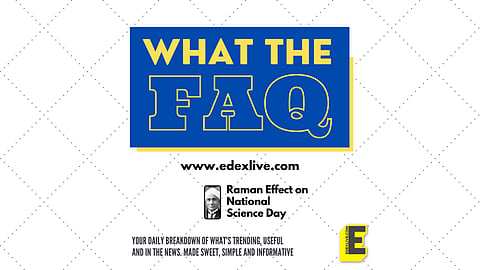

Why is February 28 celebrated as National Science Day?
In India, February 28 has been celebrated as National Science Day since 1986. It was under Prime Minister Rajiv Gandhi that the decision was taken to commemorate this day as National Science Day in the country. This year, with India's G20 presidency, the theme for National Science Day has been designated 'Global Science for Global Well-being.'
Who was Sir CV Raman?
So, why February 28? Simply put, this date holds great significance for science. It was on this date in the year 1928 that Physicist Chandrasekhara Venkata Raman discovered what is now known as the "Raman Effect" along with his student. An alumnus of the Presidency College, Raman graduated with a BA at the age of 16. After completing his Master's degree, Raman settled in Calcutta as a civil servant. His work and research at the Indian Association for the Cultivation of Science (IACS) are what earned him a global reputation as a physicist by age 29. He was always invested in the study of light and published his first paper on the subject as a student in 1906 on the diffraction of light. He was also the first Indian director of the Indian Institute of Sciences, Bengaluru in 1933.
What was the Raman Effect?
Raman used a spectrograph to essentially show that when light passes through a transparent material, it alters its wavelength and frequency. As part of the experiment, Raman tested 60 different liquids and discovered that at least some fraction of the light that scattered upon passing through the liquid had a colour that was different from that of the incident light. On March 31, the findings of Raman's experiments with the spectrograph were published in the Indian Journal of Physics. The term Raman effect was first coined by Peter Pringsheim at the University of Berlin. The Raman effect found applications not only in quantum physics but also in chemistry, where it is still used to conduct non-invasive chemical analyses.
The story behind the Nobel Prize...
After discovering the Raman Effect in 1928, he expected to receive the Nobel for Physics that very year. However, the award did not come to him that year, or in the year after. By 1930, when his work had been appreciated by his peers, he was so certain of getting the prize, that he had booked his tickets to Sweden months before the award was announced.
